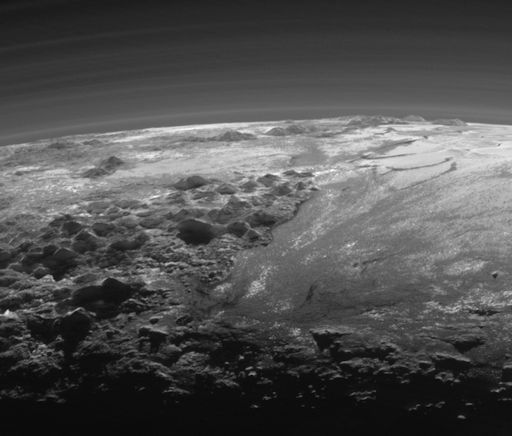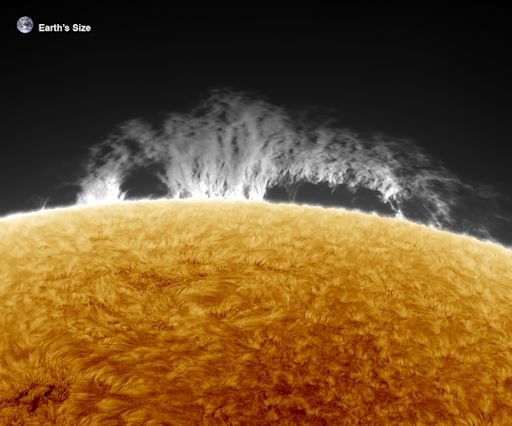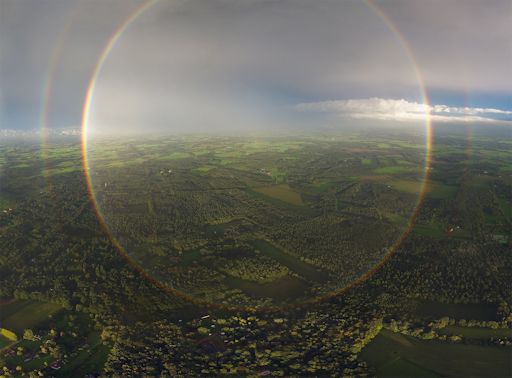Learn to photograph Northern Lights like a pro. Sign up for Peter Rosen's Aurora Photo Courses in Abisko National Park, winner of the TripAdvisor Certificate of Excellence Award 2015. | | |
ACTIVE SUNSPOT: The magnetic field of sunspot AR2415 is strongly sheared with mixed polarities shoved into close, and explosive, proximity. Breaking and reconnection of magnetic field lines in the sunspot's core could produce an M-class solar flare on Sept. 18th. Solar flare alerts: text or voice
INCREDIBLE NEW PHOTOS OF PLUTO: NASA is still downloading images from the Pluto flyby two months ago. Some of the new arrivals, like this one received on Sept. 13th, are causing researchers to question what they thought they knew about the distant dwarf planet:

New Horizons snapped the picture looking back at Pluto about 15 minutes after its closest approach on July 14th. Backlit by the sun, Pluto's rugged, icy mountains tower over a vast frozen plain extending to the horizon. The backlighting highlights more than a dozen layers of haze in Pluto's tenuous but distended atmosphere.
The new pictures provide evidence for a remarkably Earth-like "hydrological" cycle on Pluto – but involving soft and exotic ices, including nitrogen, rather than water ice. There are signs of hazes, evaporation, precipitation, and flowing glaciers similar to the frozen streams on the margins of ice caps on Greenland and Antarctica.
"We did not expect to find hints of a nitrogen-based glacial cycle on Pluto operating in the frigid conditions of the outer solar system," says Alan Howard, a member of the mission's science team from the University of Virginia. "Driven by dim sunlight, this would be directly comparable to the hydrological cycle that feeds ice caps on Earth, where water is evaporated from the oceans, falls as snow, and returns to the seas through glacial flow."
"Pluto is surprisingly Earth-like in this regard," adds Alan Stern, principal investigator of the New Horizons mission, "and no one predicted it."
GIANT PROMINENCE: The biggest thing on the sun today is not a sunspot. While most sunspots are about the size of Earth, this enormous prominence measures dwarfs our planet:

Jett Aguilar took the picture from the Philippines. "Early this morning, the weather cooperated in Quezon City and I was able to get a clear image of the beautiful giant hedgerow prominence at the sun's eastern limb "
A "hedgerow prominence" is a massive cloud of plasma held aloft by solar magnetic fields. NASA and Japanese space telescopes have taken high resolution images of similar prominences and seen some amazing things such as (1) tadpole-shaped plumes that float up from the base of the prominence; (2) narrow streams of plasma that descend from the top like waterfalls; and (3) swirls and vortices that resemble van Gogh's Starry Night.
Got a solar telescope? Take a look!
Realtime Space Weather Photo Gallery
DRONE-BOW: To see a rainbow, all you need are sunlight and falling rain. Correction: that's all you need to see half a rainbow. Typical rainbows are at least 50% hidden below the horizon.To see a complete rainbow, you also need a drone. Witness this picture taken by a drone over the Netherlands on Sept. 16th:

The drone's master is photographer Martijn Harleman. He explains what happened: "Just after a short rain shower, the sun peeked through. With still some drops still falling I quickly launched my drone. As the drone ascended, the full circle showed up. I stitched together 17 pictures to capture (almost) the whole phenomenon."
The drone view illustrates another common yet frequently overlooked aspect of rainbows. They are double. The interior or "primary rainbow" is caused by one reflection inside raindrops. The exterior or "secondary rainbow" is caused by two reflections. Turns out, you can learn a lot about rainbows by flying a drone.
Realtime Space Weather Photo Gallery
Realtime Aurora Photo Gallery
Realtime Sprite Photo Gallery
Realtime NLC Photo Gallery
Every night, a network of NASA all-sky cameras scans the skies above the United States for meteoritic fireballs. Automated software maintained by NASA's Meteoroid Environment Office calculates their orbits, velocity, penetration depth in Earth's atmosphere and many other characteristics. Daily results are presented here on Spaceweather.com.
On Sep. 18, 2015, the network reported 27 fireballs.
(26 sporadics, 1 September epsilon Perseid)

In this diagram of the inner solar system, all of the fireball orbits intersect at a single point--Earth. The orbits are color-coded by velocity, from slow (red) to fast (blue). [Larger image] [movies]
Potentially Hazardous Asteroids (
PHAs) are space rocks larger than approximately 100m that can come closer to Earth than 0.05 AU. None of the known PHAs is on a collision course with our planet, although astronomers are finding
new ones all the time.
On September 18, 2015 there were potentially hazardous asteroids.
Notes: LD means "Lunar Distance." 1 LD = 384,401 km, the distance between Earth and the Moon. 1 LD also equals 0.00256 AU. MAG is the visual magnitude of the asteroid on the date of closest approach. | | The official U.S. government space weather bureau |
| | The first place to look for information about sundogs, pillars, rainbows and related phenomena. |
| | Researchers call it a "Hubble for the sun." SDO is the most advanced solar observatory ever. |
| | 3D views of the sun from NASA's Solar and Terrestrial Relations Observatory |
| | Realtime and archival images of the Sun from SOHO. |
| | from the NOAA Space Environment Center |
| | the underlying science of space weather |
| | Web-based high school science course with free enrollment |

